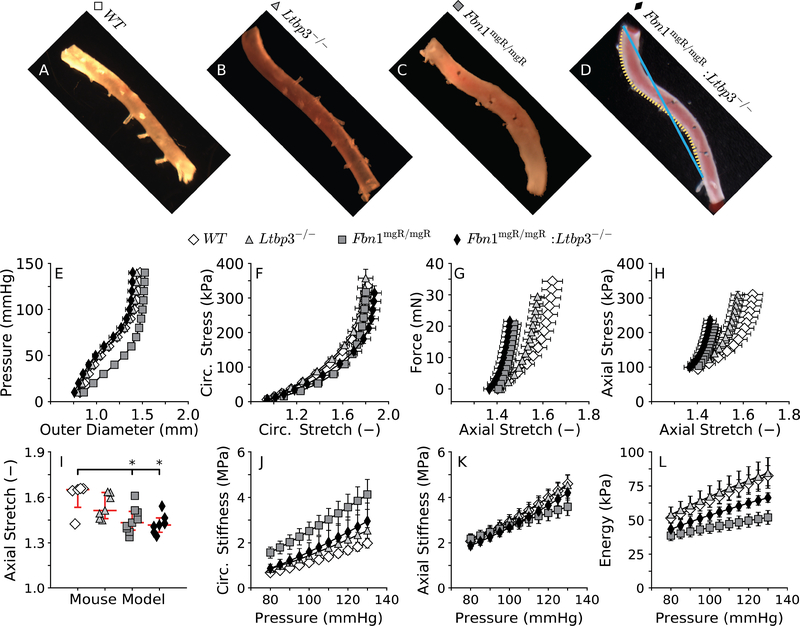Figure 3.
Configurations of the descending thoracic aorta (DTA) in vitro following blunt excision (AD) for all four genotypes: wild-type control (WT), LTBP-3 null (Ltbp3−/−), fibrillin-1 deficient (Fbn1mgR/mgR), and double mutant (Fbn1mgR/mgR:Ltbp3−/−). Note that the mgR mutation seems to induce an abnormal curvature of the excised DTA, which can be evaluated by comparing the contour length of the vessel (D, orange dotted line) to the end-to-end distance (D, blue solid line). Albeit informative, gross anatomical descriptors of vascular structure are qualitative and must be complemented with mechanical characterization from biaxial data (E-H) and derived mechanical metrics (I-L). Again, values of material circumferential (J) and axial (K) stiffnesses, and energy storage (L) are evaluated at specimen-specific values of the in vivo axial stretch (I) and shown over a range of transmural pressures. Note that Fbn1mgR/mgR DTAs have a significantly altered pressure-diameter response despite a seemingly normal diameter (E). Similar to findings for the ATA, note the nearly full rescue of the circumferential, but not axial, properties in the double mutant DTA. Statistical significance is set to *p < 0.05 for the axial stretch whereas statistical differences in the pressure-dependent metrics, in unloaded and two loaded configurations (P=100 mmHg and P=120 mmHg), are reported in Table S2.

